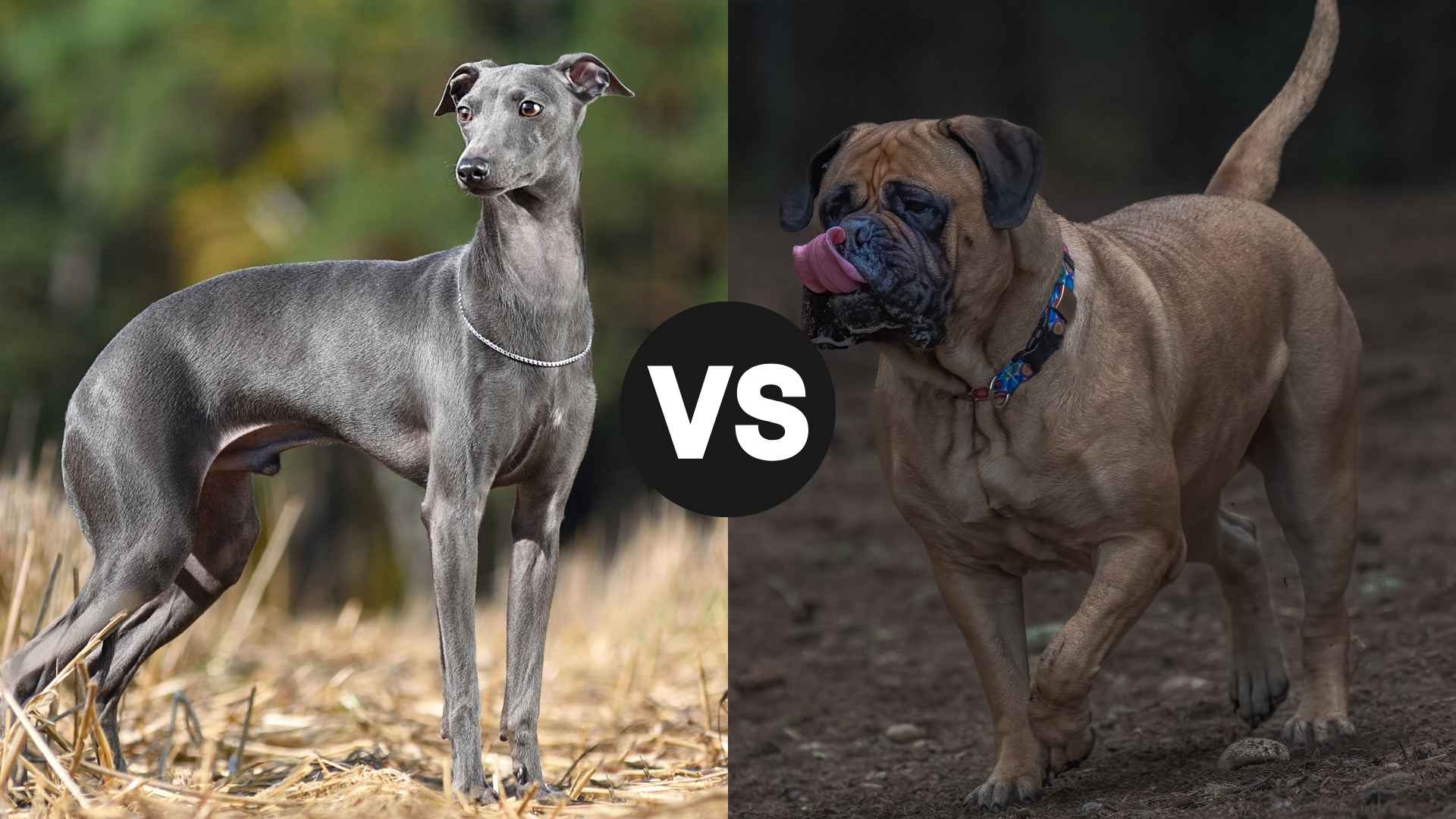Choosing between a Greyhound and a Bullmastiff can be challenging, especially when both breeds offer unique traits and personalities. While Greyhounds are known for their slim build, lightning speed, and gentle nature, Bullmastiffs stand out for their powerful frame, protective instincts, and loyal demeanor.
These two dogs couldn’t be more different in appearance and purpose—one originally bred for racing and the other for guarding. Whether you’re a first-time dog owner or someone looking to add another companion to your home, understanding their differences in temperament, exercise needs, grooming, and overall care is essential.
In this detailed comparison, we’ll explore everything you need to know to make an informed choice between the elegant Greyhound and the formidable Bullmastiff. By the end of this guide, you’ll have a clear idea of which breed aligns best with your lifestyle and expectations. Let’s dive into the world of Greyhound vs Bullmastiff!
Greyhound vs. Bullmastiff
The Greyhound is one of the oldest dog breeds, with roots tracing back over 4,000 years to ancient Egypt, where they were revered for their speed and grace. Originally bred for hunting and racing, Greyhounds are athletic, slender, and surprisingly calm indoors. Their gentle, quiet nature makes them great companions for families or individuals living in apartments.

With minimal grooming required, Greyhounds are low-maintenance, though they can be sensitive to cold weather due to their thin, soft coat. Despite their racing background, they are known as “couch potatoes” because they enjoy sleeping and lounging, requiring only moderate exercise.
The Bullmastiff originated in 19th-century England, bred to guard estates by combining the speed of a Bulldog with the size and strength of a Mastiff. This powerful yet affectionate breed is highly protective, making it an excellent watchdog and loyal family guardian. Bullmastiffs are a calm, confident, and devoted breed, but they require consistent training and socialization.
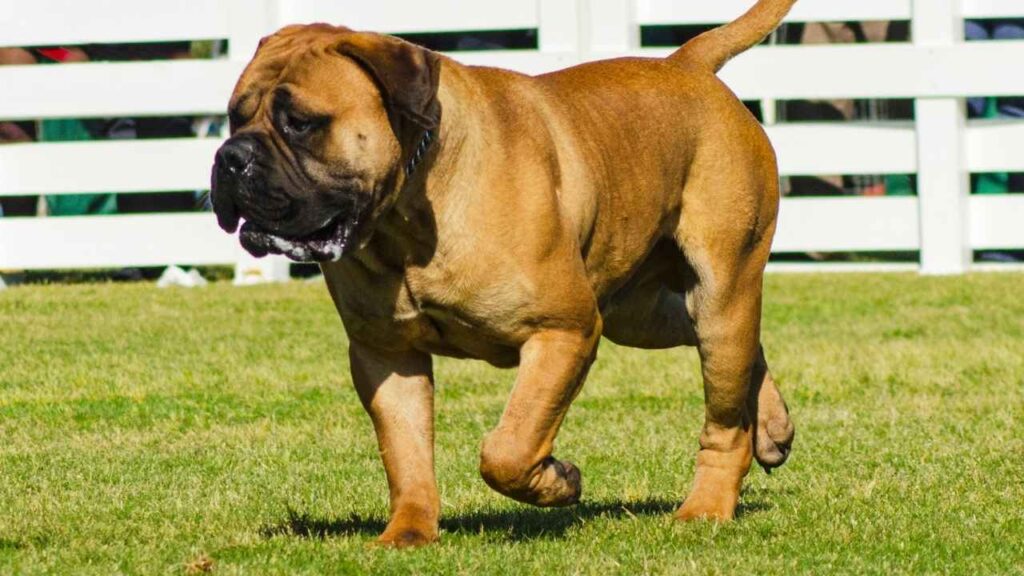
Due to their size and guarding instincts, Bullmastiffs are better suited for spacious homes with experienced dog owners. Bullmastiffs share some similarities with Greyhounds in their love for lounging and sleeping. They may not be as athletic as Greyhounds, but they still require regular activity and attention to stay healthy.
Greyhound vs. Bullmastiff: Physical Size and Weight
Greyhounds are tall, slender dogs built for speed and agility. Males typically stand between 28 to 30 inches and weigh around 65 to 70 pounds, while females measure slightly less at 27 to 28 inches and weigh between 60 to 65 pounds. Their long legs, deep chest, and narrow waist give them a streamlined appearance, making them look elegant and lightweight despite their height.
In contrast, Bullmastiffs are stocky and muscular, bred for strength and guarding. Males usually stand 25 to 27 inches tall and weigh between 110 to 130 pounds, while females are 24 to 26 inches tall and weigh around 100 to 120 pounds. Their broad frame, heavy build, and solid presence make them significantly larger and more imposing than Greyhounds, emphasizing power over agility.
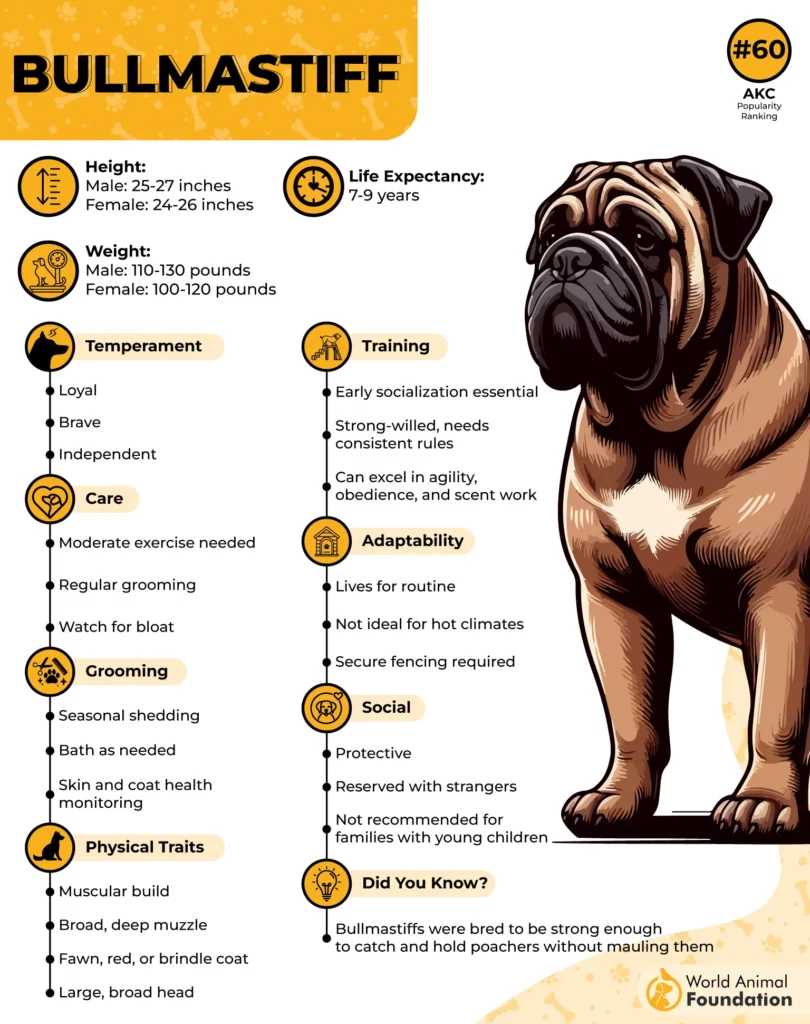
Greyhound vs. Bullmastiff: Learning Ability and Intelligence
When it comes to learning ability and intelligence, Greyhounds and Bullmastiffs show different strengths. Greyhounds are intelligent but tend to be independent thinkers. They can learn commands quickly but may not always be eager to obey, especially if the task doesn’t interest them. Their sensitive nature means they respond best to gentle, positive reinforcement rather than strict discipline.
Training a Greyhound requires patience and consistency, especially if they’re adopted after racing careers. While they are generally friendly and affectionate, they may not have the same level of protection instincts as Bullmastiffs.
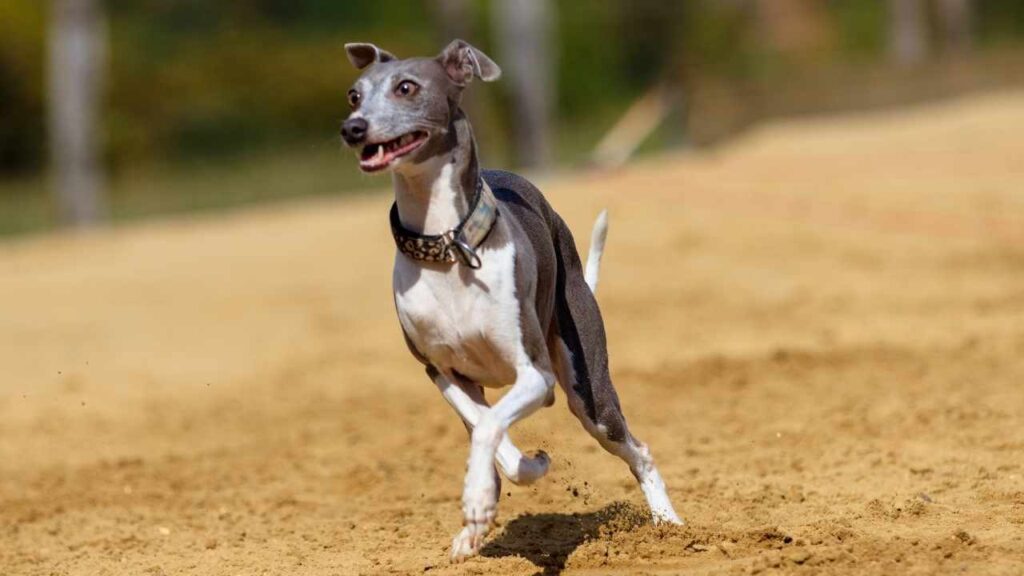
Bullmastiffs, on the other hand, are also intelligent but are more stubborn and strong-willed. Bred as guard dogs, they are naturally protective and can be slow to respond or may test boundaries when learning new commands. They need firm and consistent training from an early age to ensure they work well with other pets, like cats and other dogs, and can interact appropriately with kids.
Social interaction is crucial for Bullmastiffs, as they can be reserved or aloof with strangers. Despite their big size and protective instincts, they are capable of becoming loving, well-mannered pets with the right training.
Overall, both breeds are smart in their own ways but require different training approaches based on their temperament and instincts, especially when it comes to living in a house and interacting with other pets.

Greyhound vs. Bullmastiff: Energy Levels and Playfulness
Greyhounds, despite their history as racing dogs, are surprisingly low-energy and laid-back when indoors. They enjoy short, intense bursts of running—often called “zoomies”—but are otherwise content to lounge for most of the day. Their playfulness is light and brief, often driven by curiosity rather than high excitement, making them a great fit for calm households or apartment living.
Bullmastiffs, in contrast, have a steady and composed energy level. They are not particularly playful, especially as they mature, and tend to be more serious and reserved. As puppies, they may enjoy short play sessions, but adult Bullmastiffs typically prefer quiet companionship over active games.
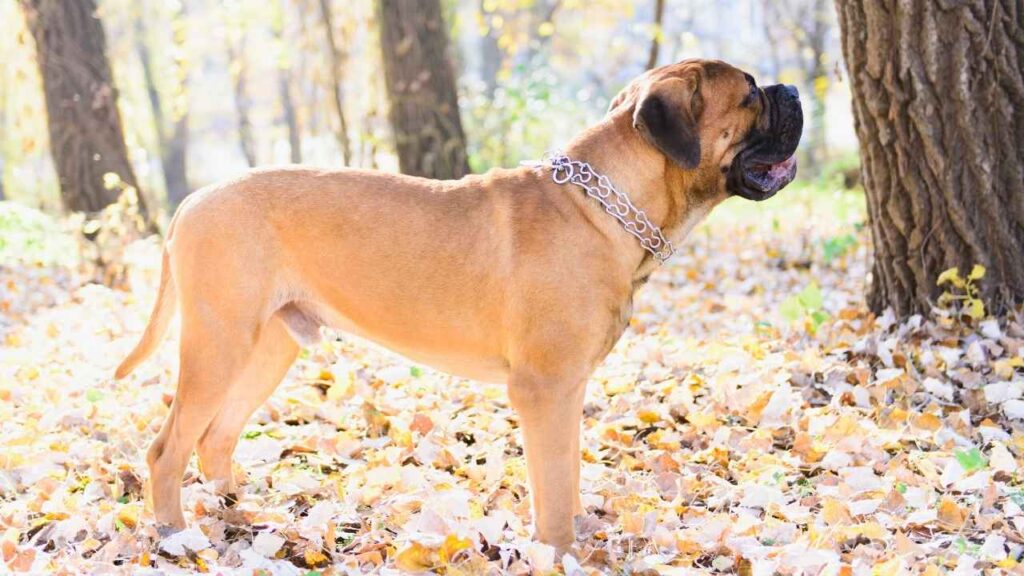
They need regular walks and moderate exercise to stay fit, but are not naturally energetic or excitable. Overall, Greyhounds show more bursts of playful activity, while Bullmastiffs remain calm and steady, thriving on routine and relaxation.
Greyhound vs. Bullmastiff: Flexibility and Self-Sufficiency
When comparing flexibility and self-sufficiency, Greyhounds and Bullmastiffs again show contrasting traits. Greyhounds are quite adaptable to different living environments, including apartments and smaller homes, as long as they get regular walks and occasional sprints.
They adjust well to new routines and environments, making them relatively low-maintenance companions. While they enjoy human company, they can also be independent and content spending time alone, especially if properly trained.

Bullmastiffs, on the other hand, are more dependent and territorial by nature. They thrive in stable, familiar environments and may not adapt as easily to frequent changes or new surroundings. While they can handle some alone time, they are deeply loyal and often prefer to stay close to their owners.
AKC states that their strong guarding instincts make them more protective and less flexible, especially with strangers or unfamiliar settings.
In short, Greyhounds tend to be more adaptable and self-sufficient, while Bullmastiffs are more rooted and people-dependent.
Greyhound vs. Bullmastiff: Health Considerations and Life Expectancy
When it comes to health considerations and life expectancy, Greyhounds and Bullmastiffs have distinct profiles. Greyhounds are generally a healthy breed with few genetic health issues. Their slim build and active nature help them maintain good health. PetMD states they can be prone to conditions like hip dysplasia, volvulus, gastric dilatation, and heart problems, such as arrhythmia.
On average, Greyhounds live between 10 to 14 years. With proper care and regular vet check-ups, they can live a long, healthy life. Their short coats and lean bodies make them more susceptible to cold temperatures, so they may need extra care during colder months.
Bullmastiffs, while strong and sturdy, are more prone to certain health concerns due to their large size. WebMD states they tend to develop gastric dilatation and volvulus (the animal’s stomach fills with air and twists), and heart conditions. Additionally, because of their massive build, they often experience joint and mobility issues as they age.
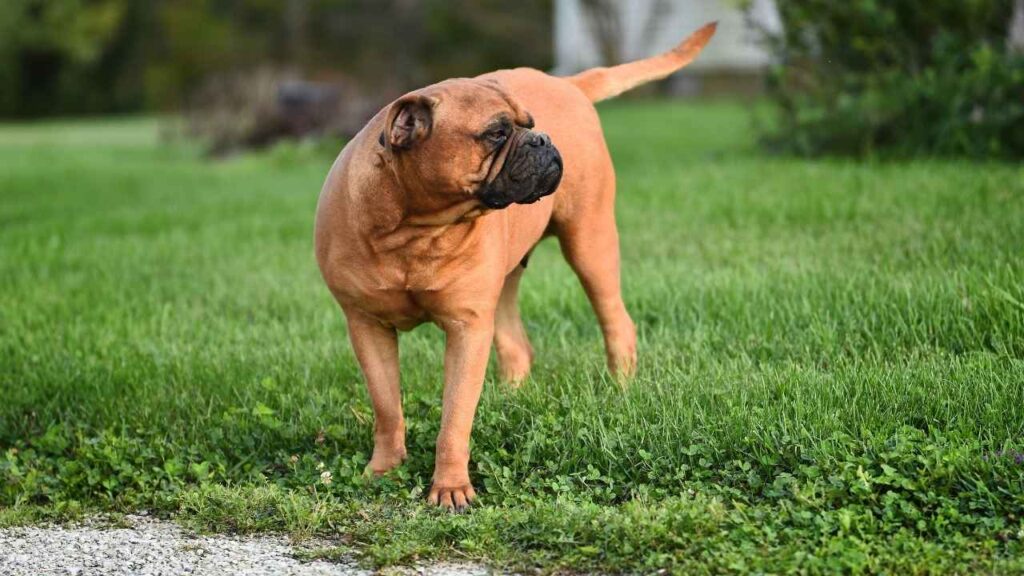
Bullmastiffs have a shorter life expectancy compared to Greyhounds, living between 8 to 10 years on average. Regular health monitoring, including weight management and joint care, is essential to ensure a long, comfortable life for this breed.
Conclusion
In conclusion, choosing between a Greyhound and a Bullmastiff depends on your lifestyle and needs. Greyhounds, with their gentle and affectionate nature, are perfect for families or individuals looking for a low-energy, easy-to-care-for dog.
They require minimal grooming and are friendly with kids, cats, and other dogs, making them ideal for a calm household. Their independent personality means they thrive with gentle, consistent training.
In contrast, Bullmastiffs are big, protective dogs that require firm training and social interaction. Though affectionate, they are more stubborn and can sometimes be challenging for first-time owners. Their guard dog instincts make them great for protection, but they need a lot of space and attention.
With proper care, Bullmastiffs make loyal, loving companions. Both breeds offer unique qualities, but each requires a different approach to training and care to ensure they thrive in your home.


